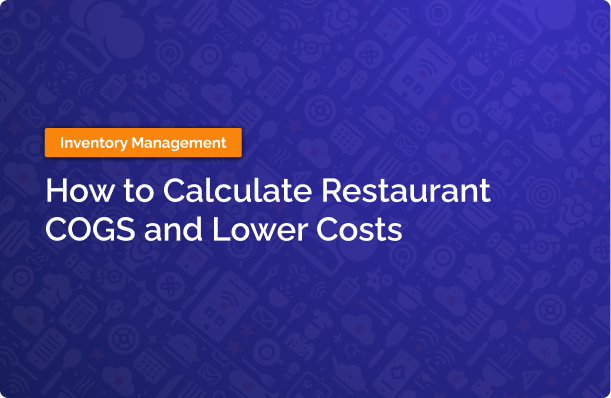
Grasping your restaurant Cost of Goods Sold (COGS) is an important step towards boosting the profitability of your business.
This guide covers the essentials of COGS for a restaurant, from understanding its components and how to calculate it, to strategies for reducing it to improve financial performance.
What Is Cost of Goods Sold in a Restaurant?
A restaurant’s Cost of Goods Sold (COGS) is all of the direct costs that go into making the products that it sells to its customers. Put simply, it’s how much money it costs to make the food a restaurant sells.
COGS gives a view into how well a restaurant is controlling food costs and how efficiently the restaurant is operating. It’s one of the most important things for a restaurant to understand since it directly impacts the business’ profitability.
Once a restaurant understands its COGS, it can take concrete steps to lower food costs and boost profitability.
What Is Included in Restaurant Cost of Coods Sold?
The Cost of Goods Sold includes all the direct expenses that a restaurant faces to prepare its menu items.
- Food Costs. COGS includes all ingredients that go into making recipes. From meat and produce, to spices and oils, food costs include every item that a restaurant uses to prepare its recipes.
- Beverage Costs. Beer, wine, liquor, soft drinks, and juices are included in COGS.
- Packaging and Paper Goods. Any packaging and paper goods used to service customers are also included in COGS. This includes takeaway containers, napkins, and any in-house disposable utensils.
- Condiments and Sauces. Condiments and sauces served tableside or with takeout orders are part of COGS. This includes everything–from the ketchup sitting on your tables to the ketchup packets sent with takeout orders.
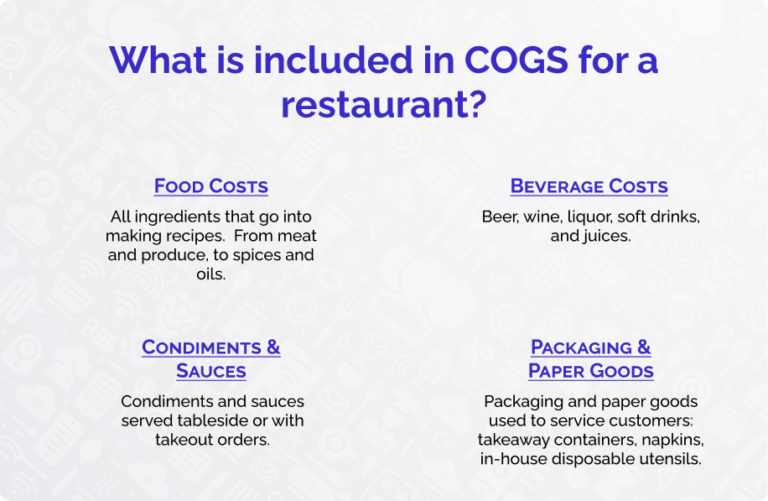
What’s not included?
COGS excludes costs that are not directly related to the preparation of menu items.
For instance, COGS does not include:
- Rent. Rent is a large expense for restaurants but is not part of COGS.
- Marketing and Promotions. Any costs incurred from marketing and promotions are not included in COGS.
- Labor Costs. Although restaurants face labor costs for producing menu items, they are typically not included when calculating COGS.
- Software Costs. Costs for software, such as POS fees or monthly subscriptions, are not included in COGS.
How to Calculate Cost of Goods Sold for Restaurants
To calculate the Cost of Goods Sold, a restaurant should know the monetary value of its inventory.
The COGS calculation has three parts:
- Starting Inventory: This represents the initial value of all inventory at the beginning of a specific period.
- Purchased Inventory: This is the total value of all inventory items a restaurant buys from its suppliers over a specified period.
- Ending Inventory. By the end of the period, ending inventory refers to the monetary value of all inventory that has not been sold to customers.
COGS Formula
The Cost of Goods Sold formula adds together a restaurant’s starting inventory and purchased inventory, and then subtracts its ending inventory from this sum.
COGS 🟰
(Starting Inventory ➕ Purchased Inventory) ➖ Ending Inventory
COGS Calculation Example
Let’s take an example of Harry’s Fish & Chips.
Harry wants to calculate his restaurant’s COGS for the month of January.
At the start of the period, on January 1, Harry has $2,500 worth of inventory held in his restaurant. This counts as the starting inventory.
During the month of January, Harry purchases an additional $6,500 worth of inventory. This is the purchased inventory. It includes all direct food costs – from fish, to potatoes, to frying oil, to takeout containers.
And at the end of the month, Harry’s restaurant has $2,000 in remaining inventory that hasn’t been sold. This counts as the ending inventory.
COGS 🟰 (Starting Inventory ➕ Purchased Inventory) ➖ Ending Inventory
COGS = ($2,500 + $6,500) – $2,000
COGS = ($9,000) – $2,000
COGS = $7,000
This indicates that Harry’s Fish & Chips had a total Cost of Goods Sold amounting to $7,000 for the month of January.
How COGS can help identify high food costs
COGS fluctuates over time, experiencing changes seasonally, monthly, and even from one shift to another.
Given these variations, consistent tracking of COGS is important since it helps to detect trends and react to them.
For instance, if there’s a gradual rise in COGS over several months, the restaurant should investigate the reasons behind this trend. Is inventory not being managed properly? Has spoilage been increasing? Did a certain recipe become less profitable? Are vendor prices increasing?
All of these are potential issues that could be impacting COGS.
COGS Ratio
The COGS ratio represents a restaurant’s COGS as a percentage of its total sales.
It’s an important benchmark that helps restaurants evaluate the effectiveness of their food cost management procedures, and guides their pricing and cost control strategies to stay profitable.
The formula for COGS ratio is:
COGS ratio 🟰 (COGS / Total Sales) × 100
What’s a Good COGS Ratio For Restaurants?
A healthy COGS ratio for a restaurant is somewhere between 30-35%.
This metric is crucial for restaurants because it directly impacts profitability. Maintaining a COGS ratio within the 30-35% range ensures that the restaurant can cover other expenses, like labor and rent, while still achieving a healthy profit margin.
It’s important to recognize that the COGS ratio can differ across restaurants based on their specific operating model or the type of food they serve.
For instance, fine dining restaurants usually have a higher COGS ratio due to the cost of premium ingredients, while casual dining spots often operate with a lower COGS ratio due to simpler menu items.
Get the ultimate guide to inventory management software
- Inventory management software essentials
- What does inventory management software do?
- Signs you need this software
- How much money I can save & ROI
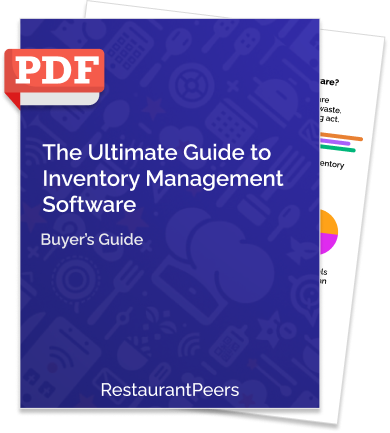
14 Ways to Lower COGS for Your Restaurant
Maintaining a continuous effort on lowering COGS is important for restaurants looking to increase their profitability over time.
Here are some strategies that a restaurant can use:
1. Monitor Inventory Carefully
The most important aspect of reducing COGS is to implement an effective inventory management strategy.
Restaurants should closely track their ingredient usage and make sure they’re only purchasing what’s needed. Keeping your inventory organized by categories helps to more accurately track items.
With strong inventory tracking processes, you can answer questions such as which ingredients are being wasted and which menu items are disproportionately driving up costs. This helps to make more informed decisions around cost-efficiency improvements.
2. Compare Suppliers
Reducing the cost of ingredients should be a priority for every restaurant.
Start by comparing prices across vendors to find which provide the best deals. If two suppliers offer ingredients of similar quality, but one is less expensive than the other, it’s in your interest to choose the cheaper alternative.
Inventory Management software can help track vendor prices over time, allowing you to analyze price trends and proactively identify vendors whose prices are getting too high.
3. Negotiate With Suppliers
If you’re happy with the quality and reliability of a specific vendor but find their prices run high, you can tactfully negotiate with the vendor.
Just be careful to keep the relationship positive. You don’t want to nickel and dime your vendors for every single item if you’re generally happy with their overall service.
4. Investigate Local and Seasonal Sourcing
Using locally sourced ingredients can not only save costs but also improve the freshness and quality of your ingredients.
For instance, purchasing local tomatoes during the summer months would ensure peak quality of the ingredient and reduce costs by taking advantage of a seasonal discount.
5. Buy In Bulk
Whenever possible, it’s smart to purchase ingredients in bulk so that you can secure better pricing.
Ordering bulk quantities allows you to take advantage of volume discounts and opens up space for more negotiation on pricing.
Buying in bulk can also reduce the frequency of orders needed, which simplifies inventory management and potentially lowers shipping costs.
6. Reduce Waste
Food waste can significantly contribute to a restaurant’s COGS.
The best way to reduce food waste is to implement a robust inventory management system.
Careful inventory management lets restaurants detect ingredients that have high amounts of spoilage and reduce purchase quantities of those ingredients.
You can also employ tactics such as using leftover ingredients in certain recipes. For instance, lightly wilted vegetables are perfect for making vegetable stock.
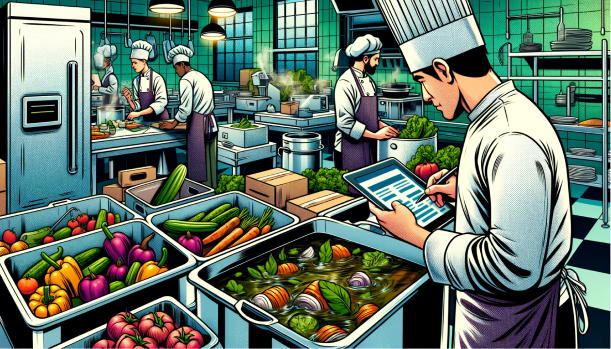
7. Reduce Employee Theft
Employee theft is another factor that can contribute to inflated COGS.
Restaurants can reduce theft by employing strict inventory controls, including regular inventory audits and keeping detailed inventory records to help identify discrepancies.
You might also install security cameras or limit employee access to high value items that are most likely to be stolen.
8. Reduce Menu Complexity
Complex menus with too many ingredients makes inventory management a challenge.
Limiting the number of complex dishes that need special ingredients can help to simplify your inventory needs and streamline the process.
9. Portion Control
Standardizing portion sizes helps ensure uniform use of ingredients in your recipes, which leads to a consistent food cost per dish.
This approach prevents overuse of ingredients on any single plate, making food costs more predictable.
By knowing exactly how much of each ingredient goes into a dish, restaurants can accurately forecast their inventory needs and set menu prices effectively to ensure profitability.
10. Cross-Utilize Ingredients
Design menu items to use the same ingredients in multiple dishes, reducing the variety of ingredients needed.
With this strategy, restaurants can make sure that perishable goods are used efficiently before they spoil, which reduces waste.
It also simplifies the inventory tracking and ordering processes, reducing the chances of over-ordering stock.
11. Substitute Less Expensive Ingredients
Always be on the lookout for less expensive ingredients that you can use as alternatives.
Perhaps you can replace asparagus with green beans as the side for your halibut recipe. The green beans might be more cost effective yet still offer guests a similar dining experience.
12. Track Food Cost Percentage
Food cost percentage is calculated by dividing the cost of goods sold by the revenue generated from those goods. Restaurants should track this metric for each of their menu items.
The formula for food cost percentage is:
Food Cost Percentage = (Cost of Goods Sold / Revenue) × 100
Tracking this metric benefits restaurants in the following ways:
- Identifies Cost Overruns: Regular tracking allows restaurants to find where they might be overspending on ingredients.
- Informs Pricing Decisions: Understanding the food cost percentage helps in setting appropriate menu prices that cover costs and remain profitable.
- Highlights Waste Issues: A high food cost percentage can indicate problems like over-portioning, spoilage, or waste.
- Facilitates Menu Optimization: By analyzing the food cost percentage of individual menu items, restaurants can decide which dishes to modify or remove from their menus to maintain a healthy margin.
13. Regularly Implement Menu Engineering
Menu engineering is the process of analyzing the popularity and profitability of menu items so that you can make adjustments to your menu to improve its profitability.
This process will guide you to replace low-selling dishes with more popular ones and position them on your menu to sell more of the items that make the most profit.
Menu engineering should be conducted regularly so that you’re always improving your menu’s profitability.
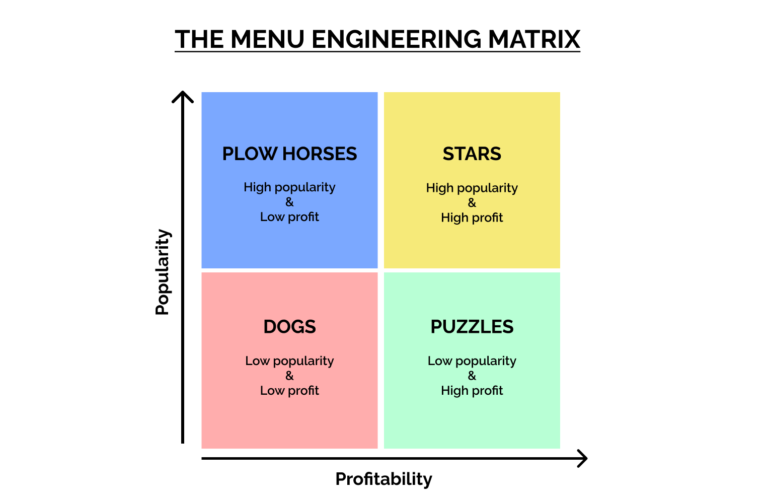
14. Use Technology
Modern restaurant software can lower a restaurant’s COGS in a number of ways:
- Inventory Management Software: This software helps ensure that ingredients are used efficiently by automating the tracking of stock levels and ordering.
- POS Systems: Integrated POS (Point-of-sale) systems offer the ability to analyze sales data in real-time, helping to identify the best-selling items and adjust inventory and menu offerings to optimize sales.
- Recipe Costing Software: This software calculates the exact cost of dishes, which helps drive menu pricing decisions to lead to more profitable margins.